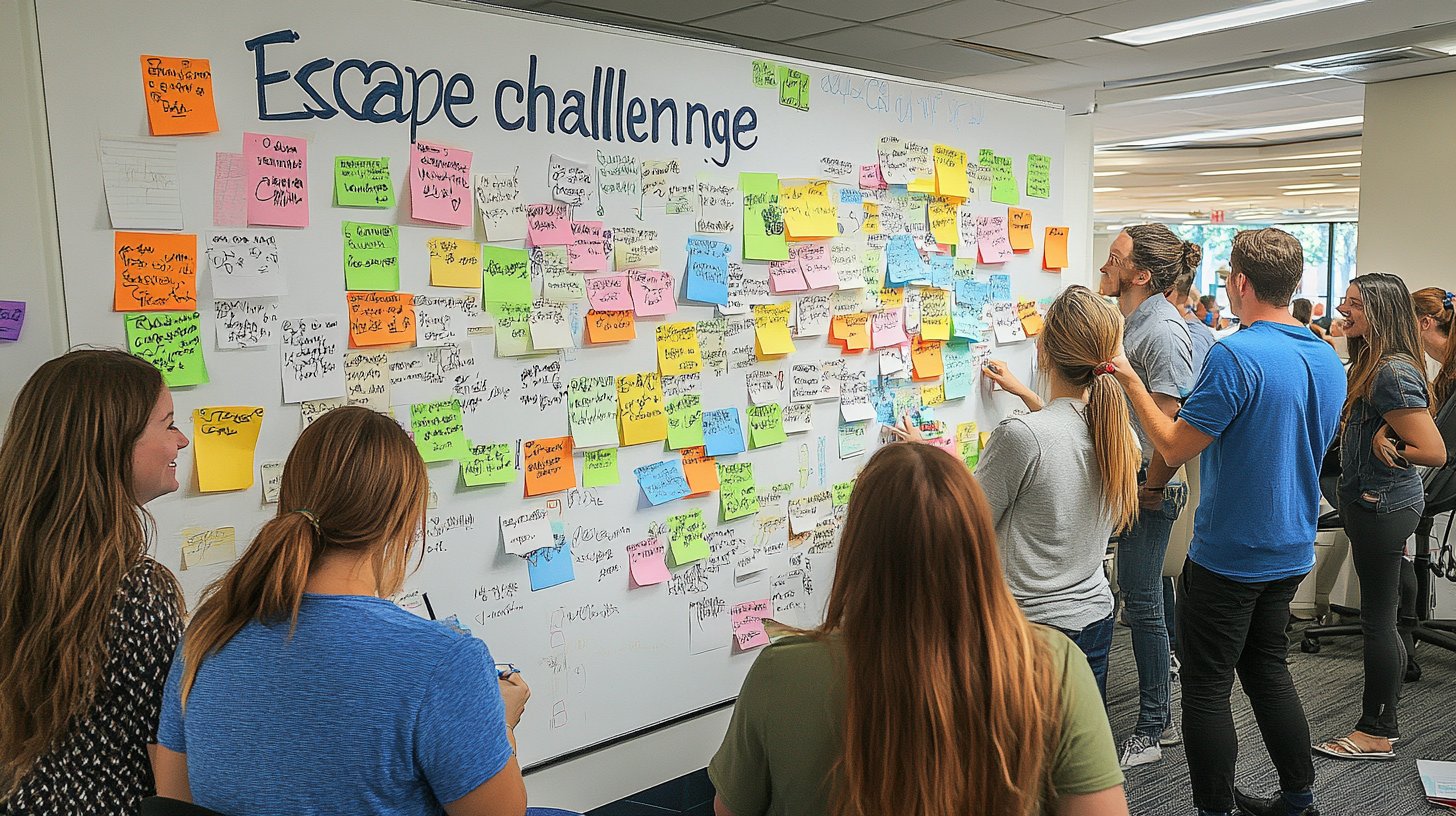Organizing a team building event often raises one question: when is the right time? You may aim to bring your teams together after intense months or facilitate the integration of new hires. These real challenges impact cohesion and collective efficiency. You also want to optimize your budget and resources without neglecting the positive impact you’re seeking.
Needs vary depending on the situation: strengthening team spirit, relieving stress, or preventing tensions. By considering your company’s rhythm and employees’ expectations, a well-planned team building event achieves concrete objectives while fostering a collaborative environment.
Discover the ideal occasions to unite your teams and transform these moments into true levers for collective performance.
Key Moments to Organize a Team Building Event
Welcoming New Employees
The arrival of new employees can disrupt the existing team dynamic. Organizing a team building event shortly after their onboarding warmly welcomes them and encourages interaction with their colleagues. This not only facilitates their adaptation but also strengthens team spirit from the start.
A fun activity outside the office helps newcomers get to know their professional environment informally. Interactions multiply, and everyone finds their place more quickly.
After an Intense Work Period
Demanding project periods can mentally and physically exhaust teams. A team building event organized just after an important deadline offers a much-needed break. It’s the perfect opportunity to release pressure, unwind, and recharge for upcoming challenges.
These moments also allow teams to celebrate successes together, fostering shared feelings of pride and recognition. Focusing on light and entertaining activities naturally revitalizes teams.
Criteria for a Successful Event
Define Clear Objectives
Before diving into the organization, it’s better to define clear objectives for the team building event. Are you looking to improve communication within the team, strengthen cohesion, or resolve internal conflicts? Clear goals will guide activity selection and determine the best timing for the event.
Knowing why you are organizing a team building event helps choose the most relevant activity formats. By focusing on specific objectives, every team member understands the purpose behind the event.
Plan Ahead
Planning ahead is essential. Reserving the right venue, selecting the best dates, and ensuring everyone’s availability pose logistical challenges. Allocate enough time to set everything up smoothly.
By anticipating effectively, you minimize the risk of setbacks and maximize the chances of success. This meticulous organization also allows participants to mentally and physically prepare for the event.
Choose the Right Venue
- Activities Outside the Office
- Transportation Coordination
- Clear Communication About the Event
- Budget Definition
Tips for Choosing the Right Activities
Consider Participants’ Interests
Each person has their own interests and preferences. Selecting activities that cater to the diverse tastes of the team ensures maximum engagement. For instance, some may prefer physical challenges, while others might opt for intellectual puzzles.
Involving the team in the activity selection process creates a sense of ownership and ensures better participation. A quick survey among members often provides valuable insights into their expectations.
Vary Activity Types
Choosing a variety of activities maintains enthusiasm throughout the event. Alternating between interactive sessions, competitive games, and relaxation moments ensures a balanced dynamic.
Additionally, this diversity caters to the varied needs of participants while maintaining a balance between effort and relaxation. Here are some examples of popular activities:
- Treasure Hunts
- Creativity Workshops
- Cooperation Games
- Nature Excursions
- Team Sports
Frequency of Team Building Events
Routine vs. Special Moments
Some believe organizing team building events too frequently can become routine and less motivating. On the other hand, focusing on symbolic and impactful moments often yields better results. Ideally, balance smaller regular events with significant annual activities.
Surprising the team with micro-moments of conviviality maintains a consistently positive atmosphere. These modest initiatives effectively complement large dedicated gatherings focused on strengthening collective dynamics.
Adapting to General Mood
Consider the overall mood within the team. If tensions arise or morale drops, this signals the need for an upcoming team building event.
Analyzing the collective mindset and adjusting the schedule accordingly maintains a harmonious work atmosphere. Promptly addressing the team’s emotional needs proves beneficial in the long term.
Metrics to Evaluate Impact
Post-Event Feedback
Collecting participants’ impressions after a team building event provides valuable insights into its effectiveness. Whether through anonymous surveys or open discussions, this approach reflects the event’s concrete impact.
Actively listening to feedback and suggestions continuously improves future planning. This ongoing cycle enhances organizational practices and tailors events more closely to the team’s needs.
Observing Behavioral Changes
Monitoring team dynamics after a team building event often reveals the level of influence achieved. Improved camaraderie, smoother communication, or increased motivation indicate tangible success.
Comparing initial behaviors with those observed following the activities highlights positive developments or necessary adjustments. These observations inform reflections on the effectiveness of implemented approaches and future directions.
Concrete Examples of Successful Organizations
Escape Room to Boost Strategy
Imagine a team participating in an escape room where every individual skill becomes crucial. Not only do members learn to collaborate better under pressure, but this activity also enhances quick decision-making.
Challenges encountered during shared adventures bring collaborators closer. They leave with shared memories, strengthening their sense of belonging to the group.
Nature Trek to Relieve Stress
Offering a trekking outing reconnects the team with nature while distancing them from daily concerns. Such activities encourage solidarity, as advancing together through natural obstacles unites human strengths.
This temporary break facilitates mental recharging. With fresh air, new ideas naturally flourish, and innovative solutions spontaneously emerge.
The Right Timing for Your Company
Analyze Activity Cycles
Examining your sector’s activity cycle helps effectively plan team building events. Certain slow periods offer more flexibility, while peak production times demand greater operational focus.
Adapting wisely to these variations optimizes resources and ensures full and active participation from employees. Aligning with commercial seasons adds a dynamic and productive flow that respects the company’s natural rhythm.
Capitalize on Surprise Events
Organizing a surprise team building event creates a beneficial shock effect. Breaking the routine with an unexpected event instantly energizes teams. Spontaneity adds an element of mystery that rekindles general interest.
However, it’s crucial to announce such events suddenly only when the overall environment is conducive. Ensure that professional constraints are compatible with such an initiative to guarantee its exciting success.








